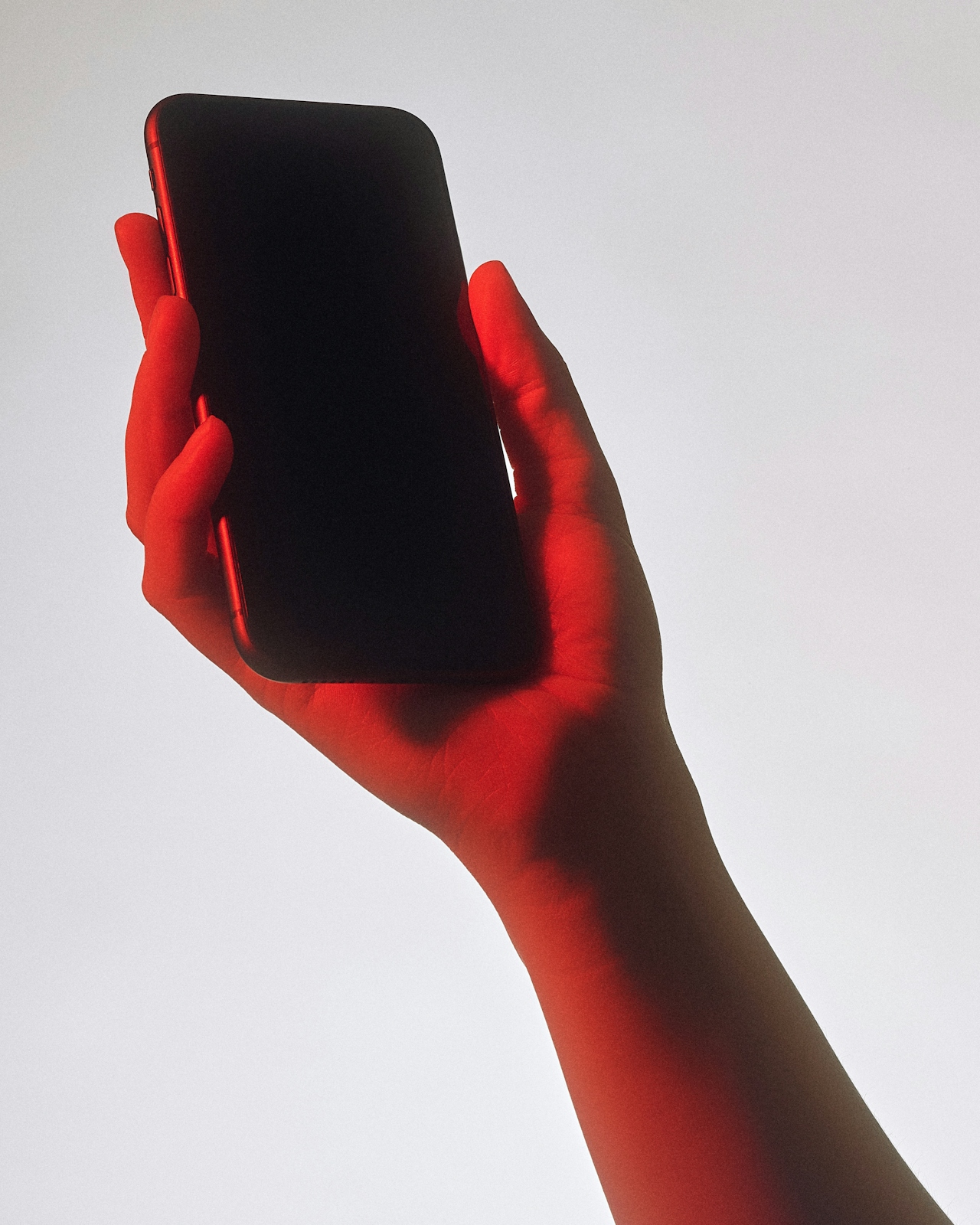User experience and interface design determine whether digital products succeed or fail regardless of underlying technology or business models. Exceptional UX/UI transforms complex functionality into intuitive experiences that users adopt enthusiastically. Poor UX/UI renders even brilliant products frustrating and unusable, causing customer abandonment no amount of marketing can overcome.
The best UX/UI agencies for startups combine strategic thinking about user needs with exceptional craft in interface design. They don't just make things look appealing—they solve fundamental problems about how people interact with digital products. They understand psychology, behavior patterns, accessibility standards, and technical constraints that shape what's possible and effective.
This review examines leading agencies based on portfolio quality, design innovation, user research capabilities, and proven ability to create interfaces that drive business outcomes through excellent user experiences. Whether you're building new products, redesigning existing applications, or optimizing conversion funnels, understanding what separates exceptional UX/UI work from adequate execution helps you choose partners wisely.
What Makes UX/UI Design Exceptional
Before evaluating specific agencies, understanding what distinguishes world-class UX/UI work from competent execution provides framework for assessment. Exceptional interfaces share characteristics that predict user satisfaction and business success.
User-centered research foundations ensure design decisions reflect actual user needs rather than designer assumptions. The best agencies invest heavily in understanding user behaviors, motivations, pain points, and mental models through research. This foundation produces interfaces that align with how users actually think rather than how designers imagine they think.
Information architecture clarity determines whether users can find what they need and understand how systems work. Exceptional UX/UI organizes complexity into intuitive structures that match user expectations. Navigation feels obvious, content hierarchy communicates importance, and workflows follow logical progressions.
Interaction design sophistication makes interfaces feel responsive and alive. Micro-interactions provide feedback, transitions guide attention, and animations communicate system states. These details collectively determine whether interfaces feel polished and professional or clunky and amateur.
Visual design quality creates aesthetic appeal while serving functional purposes. Typography, color, spacing, and composition aren't purely decorative—they guide attention, create hierarchy, and communicate brand personality. Exceptional visual design makes interfaces both beautiful and usable.
Accessibility compliance ensures products serve users with diverse abilities. The best agencies design for screen readers, keyboard navigation, and various assistive technologies from the start. This inclusive approach expands addressable audiences while often improving usability for all users.
Performance optimization prevents design ambition from creating slow, frustrating experiences. Agencies must balance visual sophistication with technical constraints ensuring interfaces load quickly and respond immediately. Beautiful designs that perform poorly accomplish nothing.
Leading UX/UI Design Agencies for Startups Globally
1. Fantasy
Fantasy has established itself as one of the premier digital product design agencies globally. Their portfolio includes work for Google, Adobe, and Nike demonstrating capability serving the most demanding clients in technology and consumer products.
The agency's strength lies in solving complex interaction design challenges. They excel at making sophisticated functionality feel simple through careful UX architecture and thoughtful interface design. For products with inherent complexity, their ability to create clarity through design is invaluable.
Fantasy's process emphasizes rapid prototyping and user testing throughout development. They validate design decisions with real users iteratively rather than delivering finished designs hoping they'll work. This research foundation produces interfaces built on evidence rather than assumptions.
Their technical capabilities extend beyond design to development. They build functional prototypes and production-ready interfaces, ensuring designs are technically feasible and perform well. This full-stack capability prevents disconnects between design ambition and technical reality.
2. Metabrand
Metabrand specializes in UX/UI design for tech startups, SaaS companies, and fintech businesses. Their focus on technology products creates deep understanding of interface challenges specific to software applications and digital services.
The studio combines UX research and strategy with interface design and development. This integrated approach ensures products are built on solid understanding of user needs and that designs are implemented with technical excellence. Their work demonstrates that startup constraints don't require compromising on UX quality.
Metabrand's process is optimized for startup timelines and budgets. They deliver professional UX/UI design efficiently without extended timelines that make traditional agencies inaccessible for early-stage companies. For founders building digital products, this efficiency makes professional design accessible during critical development stages.
Their expertise spans both marketing websites and product interfaces. They understand how to create consistent user experiences as customers move from marketing into product usage. This continuity prevents jarring transitions that erode trust and satisfaction.
3. Ueno
Ueno combines brand thinking with exceptional UX/UI design capabilities. Their portfolio includes work for Google, Redbull, and Medium demonstrating versatility across product types and business models.
What distinguishes Ueno is their integration of brand expression into interface design. They don't treat brand and UX as separate concerns—every interface decision reflects brand personality while serving usability goals. This integration produces products that feel coherent and distinctive.
Ueno's work is characterized by meticulous attention to interaction detail. Their interfaces include sophisticated micro-interactions, transitions, and animations that make experiences feel alive and responsive. This craft quality distinguishes professional work from adequate execution.
The agency's collaborative culture involves clients deeply throughout design development. They work as partners rather than vendors, ensuring design decisions align with business strategy and product vision. This collaboration produces better outcomes than agencies working in isolation.
4. IDEO
IDEO pioneered human-centered design methodologies that have influenced the entire industry. While they work across many disciplines beyond digital, their UX/UI capabilities remain world-class with particular strength in research and strategic thinking.
The agency's design thinking framework emphasizes deep user empathy through extensive research. They invest heavily in understanding user contexts, behaviors, and needs before proposing solutions. This foundation produces designs that solve real problems rather than implementing preconceived ideas.
IDEO's portfolio spans products, services, and systems demonstrating capability handling projects at various scales. Their experience with complex organizational challenges serves clients navigating digital transformation or building products requiring coordination across multiple stakeholders.
Their process includes rapid prototyping and iterative testing that validates ideas quickly. This experimental approach surfaces problems early when they're cheap to fix rather than after expensive development. For projects with significant uncertainty, this risk mitigation is valuable.
5. Metalab
MetaLab focuses specifically on product design with particular strength in UX/UI for software applications. Their portfolio includes Slack, Coinbase, and other prominent digital products demonstrating consistent capability creating interfaces that users love.
The agency's strength lies in creating intuitive interfaces for complex functionality. They excel at information architecture that makes sophisticated products feel accessible. For software with inherent complexity, their ability to simplify through design significantly impacts user adoption.
MetaLab's process includes extensive user research and usability testing. They validate design decisions with actual target users throughout development, ensuring interfaces work for real people rather than theoretical users. This evidence-based approach reduces risk of building interfaces that confuse actual users.
Their technical fluency allows them to design with full understanding of implementation constraints. They know what's buildable and what's theoretically elegant but practically problematic. This technical awareness produces designs that work in production environments.
6. Work & Co
Work & Co specializes in digital product design for consumer-facing applications. Their portfolio includes IKEA, Apple, and Virgin America demonstrating capability creating interfaces for mainstream audiences at massive scale.
The agency's approach emphasizes simplicity and clarity. They create interfaces that mainstream users can understand immediately without instruction. This accessibility serves products targeting broad audiences rather than technical specialists.
Work & Co's process includes extensive prototyping and user testing in realistic contexts. They validate designs with diverse user groups ensuring interfaces work for people with varying technical comfort and abilities. This inclusive approach expands addressable markets.
Their scale allows them to staff large projects with dedicated teams while maintaining creative leadership involvement. For complex products requiring substantial design resources, their capacity handles scope that smaller studios can't accommodate.
7. Clay
Clay combines brand thinking with sophisticated UX/UI design. Their work for technology companies including Slack and Facebook demonstrates ability to create interfaces that feel contemporary while remaining highly functional.
The agency's systematic approach to design produces comprehensive design systems with reusable components. They build pattern libraries that maintain consistency as products expand. This systematization serves software products that will grow substantially over time.
Clay's emphasis on motion and interaction design makes their interfaces feel polished and responsive. They understand how animation timing, transitions, and micro-interactions communicate system states and guide user attention. These details significantly impact perceived quality.
Their work demonstrates strong integration between brand expression and interface design. Products feel distinctively branded while maintaining usability focus. This balance serves companies where product experience is primary brand touchpoint.
Essential Elements of Effective UX/UI Design
Understanding what makes UX/UI work effective helps evaluate agency approaches and ensure engagements address the right priorities rather than superficial polish that doesn't improve actual user experience.
User research foundations prevent designing for imaginary users who don't match reality. Effective agencies invest in understanding actual user behaviors, needs, and mental models through interviews, usability testing, and behavioral analysis. This research produces insights that inform every subsequent design decision.
Information architecture establishes how content and functionality are organized and accessed. Clear IA makes complex products feel intuitive by aligning structure with user expectations. Poor IA creates confusion regardless of visual design quality. Agencies should demonstrate systematic approaches to IA development.
Interaction design determines how users accomplish tasks through interface workflows. Effective interaction design minimizes steps, provides appropriate feedback, and guides users toward successful outcomes. Every interaction should feel obvious in hindsight even if it required careful design to achieve that obviousness.
Visual hierarchy guides attention and communicates importance through size, color, contrast, and positioning. Users should immediately understand what matters most on any screen. Ambiguous hierarchy forces users to work harder to extract meaning from interfaces.
Responsive design ensures interfaces work across devices and screen sizes. Mobile experiences require different approaches than desktop due to touch interaction, screen constraints, and usage contexts. Agencies should design explicitly for each form factor rather than simply shrinking desktop layouts.
Accessibility compliance makes products usable by people with diverse abilities. This includes screen reader support, keyboard navigation, color contrast standards, and consideration for various assistive technologies. Inclusive design expands addressable audiences while often improving general usability.
What to Expect from UX/UI Agency Engagements
Understanding typical processes helps set realistic expectations when working with agencies on UX/UI design projects.
Discovery and research phases explore user needs, business objectives, competitive landscape, and technical constraints. Agencies should conduct user interviews, competitive analysis, and stakeholder workshops. Expect two to four weeks for comprehensive discovery depending on project complexity.
Information architecture development structures how content and functionality are organized. Deliverables typically include sitemaps, user flows, and conceptual models showing how users navigate through products. This foundation work establishes structure before visual design begins.
Wireframing creates low-fidelity representations of interfaces focusing on layout, hierarchy, and functionality without visual design details. Wireframes allow rapid iteration on structural decisions before investing in high-fidelity design. Expect one to three weeks for wireframe development.
Visual design applies brand expression, typography, color, and detailed interface styling to wireframe foundations. This phase produces high-fidelity mockups showing exactly how interfaces will appear. Expect two to four weeks depending on product complexity and screen count.
Prototyping creates interactive representations of designs allowing user testing before development. Prototypes range from simple clickable mockups to sophisticated simulations of functionality. Testing with prototypes validates design decisions before expensive development begins.
Design system development extends core designs into reusable component libraries with usage guidelines. Complete design systems enable consistent implementation as products expand. This systematization becomes increasingly valuable as products scale.
Development handoff includes specifications, assets, and collaboration with engineering teams ensuring designs are implemented accurately. Quality agencies remain involved during development addressing questions and validating implementation against design intent.
Total timeline from kickoff to development handoff typically spans eight to sixteen weeks depending on product complexity, screen count, and research requirements. Complex applications with extensive functionality require more time than simpler products.
Evaluating Agencies for Your UX/UI Needs
Choosing from these exceptional agencies requires matching capabilities to your specific requirements rather than selecting based purely on portfolio impressiveness.
Project complexity determines appropriate agency partners. Simple product interfaces are within most agencies' capabilities. Complex applications with sophisticated functionality require agencies with demonstrated technical depth like Fantasy or MetaLab.
Budget constraints influence options significantly. Agencies like Metabrand optimize for startup budgets. Premium agencies like IDEO or Fantasy command substantial fees reflecting senior talent and extensive processes. Be realistic about available investment and evaluate agencies operating at appropriate levels.
Timeline urgency affects which agencies can accommodate you. Some maintain long queues requiring months of lead time. Others have availability enabling faster engagement. Clarify deadline constraints early when evaluating options.
Research depth requirements vary by project. Products targeting well-understood users in familiar contexts need less research than products for new audiences or novel use cases. Match agency research capabilities to your actual uncertainty levels.
Industry expertise can accelerate projects through relevant knowledge. Agencies with significant experience in your sector bring useful context. However, don't overweight this factor—exceptional agencies with strong processes often deliver excellent results even without specific sector experience.
Choosing the right UX/UI agency creates foundation for products that users adopt enthusiastically and promote organically. The best partners combine user research with exceptional interface design to create experiences that drive business outcomes through excellent usability.
Get a free quote from Metabrand.










